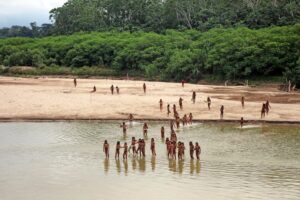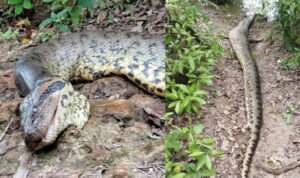A discovery published on May 25, 2022, in Nature indicates that mounds found in the southwest corner of the Amazon Basin were once the site of ancient urban settlements.
“This is the first clear evidence that there were urban societies in this part of the Amazon Basin,” Jonas Gregorio de Souza, an archaeologist at the Pompeu Fabra University in Barcelona, Spain, said in the article.
These new findings reveal that ancient Amazonians built and lived in densely populated centers around 1,500 years ago.
Scientists thought that the Amazon was a wild and untouched wilderness before this discovery. Especially before the arrival of Europeans in the 16th century.
However, we now know this region was a homeland for advanced societies.
The vast complexities of these settlements are “mind-blowing,” said Heiko Prümers, an archaeologist at the German Archaeological Institute headquartered in Berlin.

Aerial view of the Bolivian settlement. Photo: Prümers, H., Betancourt, C. J., Iriarte, J., Robinson, M. & Schaich, M./Nature
How did they uncover the settlements?
Scientists uncovered what is within the Amazon mounds in Bolivia through an aerial remote-sensing technology called Light Detecting and Ranging (lidar).
Lidar is a technique that uses lasers to create a 3D image of the ground below. Without it, these buried settlements have been impossible to see from the air. As the Amazonian jungle continued to grow throughout the centuries, it infringed on any visibility of the ancient settlements.
Many questions regarding these newfound colonies abound. For example, why were they abandoned after 900 years? Radiocarbon dating for that time frame shows that this Casarabe culture effectively disappeared in 1400.
Research: https://doi.org/10.1038/d41586-022-01458-9






